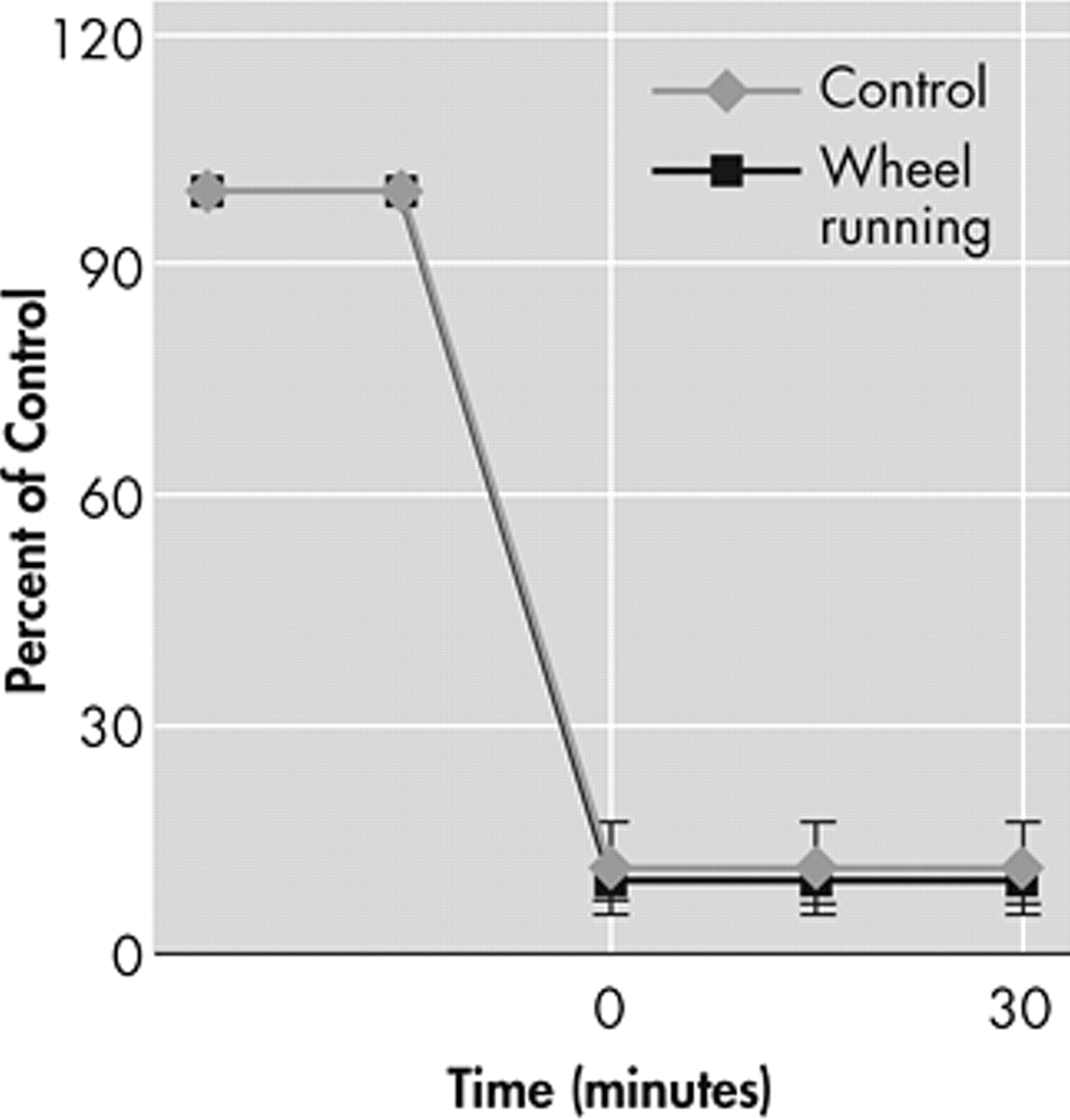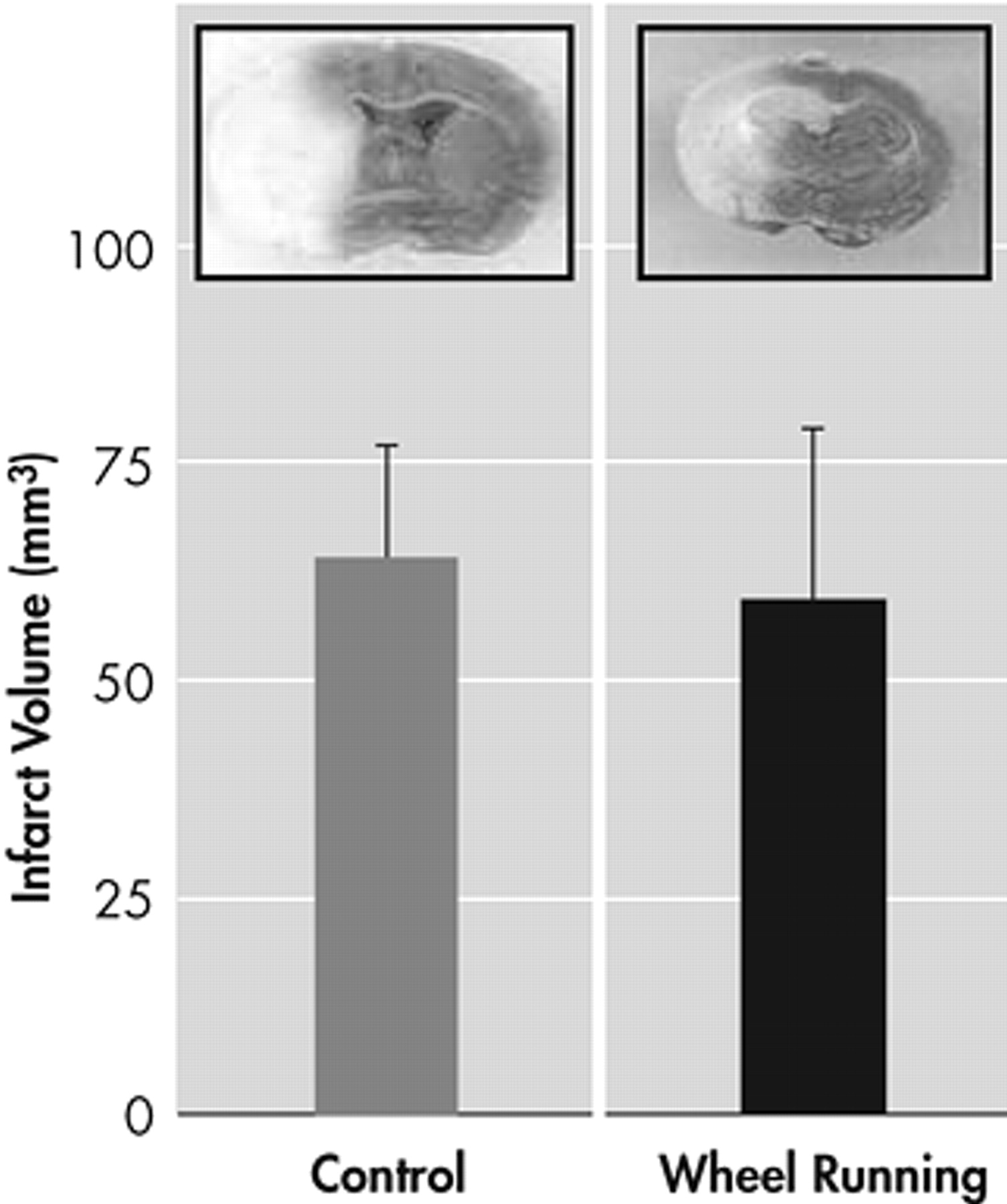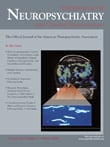To the Editor: A large body of evidence indicates that locomotor activity can be beneficial in maintaining and even improving neural function following insult or disease.
1 It has already been shown, however, that physical exercise can preserve cognitive function in elderly populations, promote functional recovery after CNS traumatic injury, and induce neurogenesis in the adult CNS.
1 Previous studies indicated the protective role of preischemic locomotor activity on neuronal damage after transient cerebral ischemia which involved an enhanced postischemic reperfusion phase.
2,
3 In order to eliminate the postischemic enhanced reperfusion phase, which may be the consequence of attenuated thromboxane liberation after transient ischemia, we linked exercise with neuronal damage before permanent cerebral ischemia and evaluated the possible neuroprotective effect through 2% 2,3,5-triphenyltetrazolium chloride (TTC) staining.
Adult male C57BL/6j mice (21–25g) were housed in a 12/12 hour light/dark vivarium with ad lib access to food and water and were assigned randomly to a voluntary exercise group or a sedentary control group. The freely-moving mice were exposed to running in a polyethylene cage (30×40×20 cm) equipped with a running wheel for 14 days, which was recorded continuously by a computer. After 14 days of preischemic locomotor activity, the animals were exposed to the permanent focal cerebral ischemia of the middle cerebral artery using an intraluminal filament technique.
4 The rectal temperature was maintained between 36.5 and 37.0°C using a feedback-controlled heating system. The cerebral blood flow was measured by Laser Doppler Flowmetry (LDF), which was declined as to ∼15% of preischemic control levels immediately after thread insertion in all animal groups (
Figure 1 ). The area of infarction was measured by 2% 2,3,5- triphenyltetrazolium chloride staining.
In prior studies using the transient ischemia model, it was shown that physical activity protects against ischemic stroke via mechanisms related either to the upregulation of endothelial nitric oxide synthase (eNOS) or to decreased tromboxan A2 in the vasculature.
2,
3 In contrast, it has been shown that physical exercise can also increase the production of mRNA for neurotrophins and promotes angiogenesis in response to motor exercise.
5 In our study the difference of the infarct volumes between the runner and nonrunner groups was not statistically significant (
Figure 2 ) (64±13 vs. 59±20) (p>0.05, independent samples t test).
This study demonstrates in a well-characterized animal model that the protective effect of regular physical activity by permanent cerebral ischemia is not efficiaous as in transient cerebral ischemia. Although we cannot completely rule out a neuroprotective effect on ischemic episode, our study suggests that a major neuroprotection is conferred during reperfusion by transient ischemia for mice that have undergone exercise preconditioning. This may indicate that reduction of ischemic brain injury may relate more to the augmentation of regional cerebral blood flow (rCBF) than the production of endogen neurotrophins and suggest the protective role of vascular factors rather than parancimal factors by preischemic locomotor activity.
However, further studies showing a causal relationship between exercise-induced neural tolerance, cellular expression of neurotrophins, and angiogenesis factors for both models of cerebral ischemia are needed.



